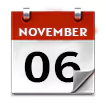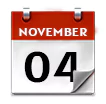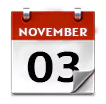6 Nov 2023 : Indian Express
Indian Express
6-November-2023
1) CLEAR AND PRESENT DANGER
Context:
- The Delhi Declaration, signed by India during its G20 chairmanship, committed the world health architecture to strengthening.
- Strengthening current infectious disease surveillance systems, using the One Health model, improving pandemic preparedness, and creating more resilient, equitable, sustainable, and inclusive health systems were the main goals.
- This proclamation demonstrates the understanding of the vital role health systems play in tackling global issues.
Prioritizing Tackling Antimicrobial Resistance (AMR)
- Prioritizing research and development (R&D), infection prevention and control, and antimicrobial stewardship initiatives under corresponding National Action Plans (NAPs) was a crucial component of the agreement.
- It was also emphasized how important it is to guarantee that everyone has fair access to safe, efficient, and reasonably priced medications, vaccines, diagnostics, and other medical countermeasures, especially in low- and middle-income nations, least developed nations, and small island developing states.
The AMR Challenge
- 27 million deaths were directly linked to bacterial AMR in 2021, according to a report published in The Lancet.
- This number is comparable to the number of deaths caused by diseases like HIV and malaria.
- 95 million deaths were linked to bacterial AMR.
- The highest fatality rates were seen in South Asia and Sub-Saharan Africa, suggesting a high level of AMR susceptibility.
- Increased susceptibility to antibiotics due to overuse presents a serious risk to advancements in public health, particularly the prevention of infectious diseases and the provision of healthcare services for cancer and organ transplants.
- More than 60% of the world’s population resides in G20 countries, therefore adding Africa, which accounts for 17.89% of the world’s population, to this endeavor will have a big impact, especially on nations with low infrastructure spending in the healthcare sector.
Steps That Should Be Taken
- Both local and global efforts are required to translate the Delhi Declaration’s intentions into practical outcomes.
- Since many G20 nations have well-developed NAPs, collaboration with developing nations is essential to the creation of regional AMR action plans on a global scale.
- Other crucial tactics include advocating for patent reforms to encourage innovation and guarantee the affordability of novel antibiotics and supporting an international financing framework that concentrates on AMR R&D.
- It can also be beneficial for underdeveloped nations to discuss and investigate models such as the Medicines Patent Pool.
- Countries must give NAP implementation a high priority at the local level.
- One example of this is India, which created a thorough NAP on AMR in 2017.
- Lack of resources and leadership in India resulted in execution that was not at all optimal. Under the NAP-AMR, research and surveillance for creative, cost-effective initiatives, cross-sectoral collaboration, and growing monitoring networks have been the main priorities.
- AMR containment strategies could be strengthened by government programs like Kayakalp and Free Diagnostic Services.
- Important elements include promoting responsible behavior among citizens through academic involvement, education, and cooperation with civil society groups (CSOs).
- AMR containment in India has seen little CSO involvement, in contrast to TB and HIV/AIDS programs, which both saw substantial advancements thanks to CSO involvement.
Way Forward
- Even though AMR’s annual death toll is on par with that of a pandemic like Covid-19, it is still a real and present threat due to its close proximity. It has to be given the same urgency, funding, and attention as COVID-19.
- AMR has been addressed by a number of nations, including Brazil, Australia, Indonesia, the United Kingdom, and the United States.
- In order to lessen the impact of AMR, India may also set an example by developing international cooperation, encouraging responsible behavior, and growing its networks of surveillance and monitoring.
2) App for mother and child welfare
Context:
- The largest mobile phone nutrition monitoring system in the history of world health was introduced with the Government of India’s Poshan Tracker.
- The Poshan Tracker has attained widespread adoption in less than two years, in contrast to previous app-based nutrition monitoring systems that have typically been restricted to one-time test projects.
- The app has been downloaded and is actively used by nearly 1.3 million Anganwadi workers in all states and Union territories, creating an incredible precedent for thorough integration into national institutions.
Significant Monitoring Opportunity
- The Poshan Tracker offers a unique chance to track and treat malnutrition in India.
- 72 million children under five have their height and weight measured in real-time, which amounts to monitoring more than half of all children in the nation.
- Moreover, a significant 94% of the beneficiaries have their Aadhar confirmed, which improves the accuracy of the data.
Data Collection and Tracking
- Data on Anganwadi infrastructure, including open facilities with operational amenities, is collected at the national, state, and district levels via the Poshan Tracker dashboard.
- In addition, it monitors nutritional results and the distribution of take-home rations and hot meals to beneficiaries.
- Through the identification of children at risk, the targeting of those experiencing acute malnutrition, and the monitoring of ICDS service delivery, the platform acts as a real-time feedback loop to assist frontline workers in preventing malnutrition.
Modules and Features
- The Poshan Tracker provides a number of modules, including the ability to register beneficiaries, track job aid on a daily basis, monitor growth in accordance with WHO guidelines, and facilitate beneficiary movement to different Anganwadi facilities.
- It also offers a gateway for reporting community interaction on nutrition promotion and dashboards for tracking important performance indicators. We are developing AWC modules for border and tribal areas.
Addressing Data Quality and Timeliness
- When it comes to nutrition monitoring, data timeliness and quality must be addressed.
- Poshan Tracker has the ability to improve accuracy; growth monitoring accuracy through mobile phone apps has been shown to improve by 80% in Indonesia.
- The app’s automatic computations lower the possibility of inaccuracy while assessing nutritional outcomes.
- Real-time data transfer also prevents delays brought on by paper-based reporting and guarantees prompt access to municipal, state, and federal offices.
Benefits of Granular and Real-time Data
- The Poshan Tracker data granularity plays a crucial role in mitigating the fluctuations in malnutrition rates by providing decision-makers with up-to-date information that enables them to promptly adopt local actions.
- While the Poshan Tracker assures real-time data transfer, paper-based reporting typically takes longer.
- Furthermore, since Anganwadi workers are essential to the system’s success, the app’s user-friendliness needs to be updated often based on their input.
Way Forward:
- Although the Poshan Tracker is an innovative nutrition tracking program, it’s important to keep in mind that data is a tool, not a goal within itself.
- When malnutrition is identified, funds must be allocated to the provision of basic services, guaranteeing that the goals set forth in the Poshan 2.0 principles are realized in concrete and implementable ways at the local level.
- Long-term monitoring and skill development are essential to this novel system’s effectiveness.
For Enquiry

6 Nov 2023 : Indian Express

6 November 2023 : Daily Current Affairs

4 Nov 2023 : Daily Quiz

4 Nov 2023 : Daily Answer Writing

4 Nov 2023 : Indian Express

4 Nov 2023 : PIB

4 November 2023 : Daily Current Affairs

4 November 2023 : The Hindu Editorial Notes PDF

3 nov 2023 : Daily Quiz

3 Nov 2023 : Daily Answer Writing
Indian Express 6 Nov 2023 : Indian Express Indian Express
6-November-2023
1) CLEAR AND PRESENT DANGER
Context:
The Delhi Declaration, signed…
Daily Current Affairs 6 November 2023 : Daily Current Affairs Daily Current Affairs
6-November-2023
1) DESPITE GOVT’S EFFORTS, WHY ONION PRICES ARE STILL HIGH
Topic:…
Daily Quiz 4 Nov 2023 : Daily Quiz 4 Nov 2023 : Daily Quiz…
mains answer writing 4 Nov 2023 : Daily Answer Writing Mains Answer Writing
4-November-2023
Q1) Examine the importance of establishing a National Tribunals…
Indian Express 4 Nov 2023 : Indian Express Indian Express
4-November-2023
1) A matter of greying
Context:
The prospects for the population…
November 2023 PIB 4 Nov 2023 : PIB PRESS INFORMATION BUREAU
4-November -2023
1. Atal Innovation Mission Opens Application for School Innovation…
Daily Current Affairs 4 November 2023 : Daily Current Affairs Daily Current Affairs
4-November-2023
1. Difficult to press for women’s quota before LS poll: SC
Topic:…
November 2023 The Hindu 4 November 2023 : The Hindu Editorial Notes PDF The Hindu Editorial
4-November-2023
1. The IITs are overcommitted, in crisis
Topic: GS3 – education…
Daily Quiz 3 nov 2023 : Daily Quiz 3 Nov 2023 : Daily Quiz…
mains answer writing 3 Nov 2023 : Daily Answer Writing Mains Answer Writing
3-November-2023
Q1) Resorting to ordinances has always raised concerns about the…




